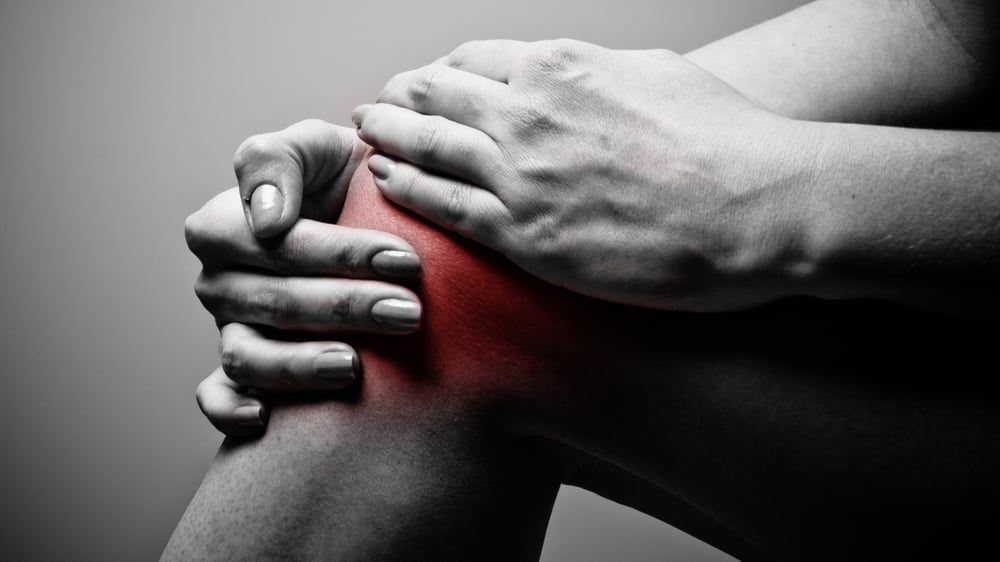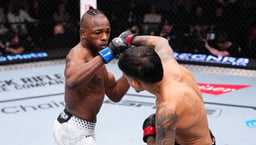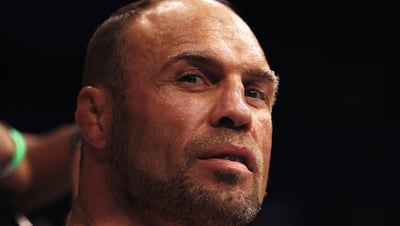
issue 218
June 2025
Your knee doesn’t care how tough you are, and one of the world’s leading experts shows how to stop it from ending your career early.
Knee-deep in drama? Just ask Tom Aspinall, Petr Yan, or Shavkat Rakhmonov. One minute, you’re climbing the rankings. The next, you're learning the names of every ligament in your leg. ACLs shredded. Menisci mashed. Full recon jobs. It’s almost an unofficial rite of passage for rising stars. When it comes to keeping combat athletes in the game, few appreciate the stakes more than Dr. Saam Falahati. As Chief Medical Officer for the National Governing Body of Olympic Wrestling for Great Britain and the country’s first-ever representative on the United World Wrestling Medical Commission, he’s worked ringside at the World Championships, the Commonwealth Games, and with Olympians. For Dr. Falahati, it’s all about keeping fighters doing what they love. As far as potential career-enders are concerned, one joint stands out: the knee. It’s a key tool in MMA. However, this need not be so if looked after smartly.
WHY YOU SHOULD NEVER IGNORE KNEE PAIN
You already know your knees are taking a beating. Whether you're shooting a takedown, checking a kick, or pivoting to escape a clinch, your knees are constantly under pressure. However, many fighters underestimate how costly it can be when that pressure leads to injury, and those injuries are ignored.
“Chronic knee problems don’t just affect how you move,” says Dr. Falahati. “They affect how you fight - your explosiveness, confidence, and ability to commit to a movement without hesitation.”
If you compensate for knee pain with awkward movement patterns, you risk further injuries in your hips, back, or even your other knee. Over time, that pain risks spilling into your daily life outside your training. Worse, leaving knee damage untreated can lead to early arthritis, making the post-fighting years harder than they need to be.

COMMON KNEE INJURIES
Fighters are most often hit with injuries like MCL sprains from sudden impacts or twists and ACL tears that happen when landing awkwardly or changing direction. You might also experience meniscus tears, often caused by rotational stress in grappling or patellar tendinopathy from the repetitive demands of explosive training. If you’ve ever taken a knee to the mat or cage wall, you might well have dealt with contusions or bursitis from direct trauma. Any of these can slow you down or stop you completely if not handled intelligently.
THE INJURIES YOU CAN ACTUALLY AVOID
Here’s the good news: a lot of knee injuries don’t have to happen in the first place. Non-contact ACL injuries often come from poor landing mechanics or training while fatigued. Patellar tendinitis tends to build up when you’re pushing too hard, too often, without enough rest. Sparring with sloppy technique or going too hard too soon can lead to meniscal strains. And it may sound simple but skipping knee pads or training on subpar mats are common culprits for bruising and inflammation you could easily prevent. Muscle imbalances, such as overdeveloped quads and undertrained hamstrings, are another common cause of knee instability. If your training is built on power but lacks balance, you could be setting yourself up for problems down the line.

HOW TO STAY IN THE FIGHT
If you want to protect your knees and extend your career, here’s what Dr. Falahati recommends:
Build strength in the right places. Make sure your quads, hamstrings, glutes, and calves are all being trained, not just for size or strength, but for balance and control. These muscles are your knees’ first line of defense.
Train stability, not just power. Add single-leg movements, balance drills, and exercises that challenge your coordination. Your ability to control movement matters just as much as the force you produce.
Treat warm-ups as non-negotiable. Before every session, activate your muscles and mobilize your joints. Jumping cold into intense work puts your knees at risk right from the start.
Know when enough is enough. Fatigue is when form breaks down, and injuries are most likely to occur. Listen to your body. If you’re wiped, dial it back. Training smart beats training hard every time.
Sharpen your movement mechanics. Whether it’s your takedowns, your kicks, or how you land after a strike, sloppy form multiplies the risk of injury. Work with a coach or physio to help you fine-tune how you move.
IF YOU’RE ALREADY INJURED
Not every knee injury needs dramatic treatment or surgery, but every injury needs attention. Start by getting a proper diagnosis. Guessing what’s wrong or trying to push through the pain can make things worse. Once you know what the issue is, follow a rehab plan that builds you back up gradually. That means first restoring your range of motion, then building strength, and finally reintroducing function. In the early days, focus on reducing pain and swelling. Ice, elevate, rest - don’t skip the basics. At the same time, keep training what you can to stay engaged and conditioned - your upper body, your core, and even mental reps. Most importantly of all, don’t rush it. If something doesn’t feel right, it probably isn’t. Coming back too soon can set you back for months.
GETTING BACK IN THE GAME SAFELY
Once you’re cleared to train again, take a phased approach. Start with low-impact drills, such as shadowboxing and controlled movement, and build from there. Rebuild your confidence slowly with controlled reps before jumping into high-intensity work. Use objective tests, like hop tests or agility drills, to gauge whether your knee is really ready. When you return, focus on perfect form, not pushing for maximum weight or diving into hard sparring. And stay honest with your coach. The more they know about how your knee feels, the more they can help tailor your sessions to keep you progressing in the right direction. You fight because you love it. You kill it in the gym because you want to excel, both now and in the long run. In a sport where margins are razor-thin and physical demand is relentless, Dr. Saam Falahati is both a guardian and guide. His message is simple but poignant: if fighters want to last and thrive, they must protect their knees with the same intensity they bring to the cage.
“Longevity in combat sports isn’t just about bouncing back,” Dr. Falahati says. “It’s about building a body that doesn’t break down in the first place.”
So, whether you’re just starting out or already a seasoned pro, give your knees the respect they’ve earned. Your future in the fight depends on it.
Safe MMA is a globally renowned medical charity dedicated to the safety of MMA competitors. It was founded in 2012 by medical experts together with representatives from the UK MMA community in the absence of sport regulation. safemma.org
...










